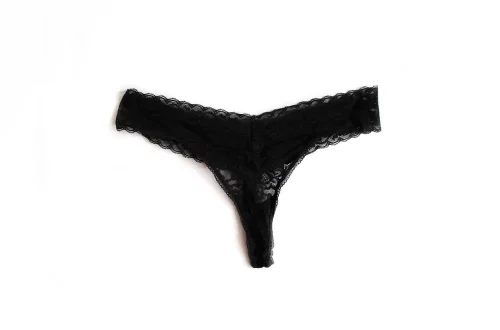
Exploring the Significance of Slave Collars in BDSM Culture
The world of BDSM (Bondage, Discipline, Dominance, Submission, Sadism, and Masochism) is rich with symbolism, ritual, and a variety of practices that cater to a wide range of desires and preferences. One of the more striking symbols within this culture is the slave collar. This item, often made of leather, metal, or other materials, serves as a powerful representation of ownership, commitment, and trust between partners in a BDSM dynamic.
The significance of slave collars transcends mere aesthetics; they are deeply embedded in the emotional and psychological aspects of BDSM relationships. For many, a collar can signify a profound bond, serving as a tangible reminder of the power exchange that exists in a D/s (Dominant/submissive) relationship. It is not simply an accessory, but rather a symbol of the connection, responsibilities, and trust shared between the individuals involved.
In many BDSM circles, the collaring ceremony is a momentous occasion, often celebrated as a rite of passage or a formal acknowledgment of the dynamics at play. This ritual can be steeped in meaning, reflecting the commitment and intention behind the relationship. The act of putting on a collar can evoke feelings of safety, belonging, and affirmation of one’s role within the partnership.
Understanding the nuances of slave collars in BDSM culture requires delving into their historical context, the psychological implications, and the various styles and types that exist. Each aspect contributes to the rich tapestry of meaning surrounding these symbols of submission and ownership.
The Historical Context of Slave Collars
The origins of slave collars can be traced back to various historical practices that involved the marking of ownership. In ancient societies, collars or other forms of restraint were often used to denote servitude, whether in domestic settings or in the context of slavery. These collars were not just physical restraints but also carried significant social implications, indicating the status and role of the individual wearing them.
In modern BDSM culture, the use of collars has evolved significantly. They are no longer seen as tools of oppression but rather as symbols of consensual power exchange. The transformation of the collar’s meaning from a mark of ownership to a representation of trust and mutual respect is a profound shift that reflects the changing dynamics of relationships in contemporary society.
This historical perspective is crucial for understanding how collars function within BDSM. They are not merely fashion statements; they carry the weight of history and the evolution of societal norms regarding ownership and consent. By recognizing this context, individuals can better appreciate the significance of a collar in their own relationships.
In today’s BDSM community, collars can vary greatly in style and symbolism, ranging from simple leather bands to elaborate decorative pieces adorned with jewels. The choice of collar often reflects the personality and preferences of the individuals involved and can signify different levels of commitment and ownership.
The Psychological Significance of Wearing a Collar
Wearing a slave collar can have profound psychological effects on both the submissive and the dominant partner in a BDSM relationship. For the submissive, the collar often symbolizes a deep sense of belonging, acceptance, and identity. It can serve as a reminder of their role within the dynamic and the trust placed in them by their Dominant. Many submissives report feelings of security and empowerment when wearing their collar, as it signifies their commitment to the relationship and their acceptance of their role.
On the other hand, for the Dominant partner, the collar represents responsibility and care. It serves as a reminder of the commitment made to the submissive, emphasizing the importance of nurturing and protecting the relationship. The psychological weight of this responsibility can be significant, as it involves not only the physical well-being of the submissive but also their emotional and psychological state.
The act of collaring can also enhance the bond between partners, creating a shared sense of identity and purpose. This ritual can deepen the connection and trust between the individuals involved, fostering a greater understanding of each other’s needs and desires. The collar becomes a symbol of the journey they are undertaking together, reflecting their unique dynamic and the level of intimacy they share.
Furthermore, the ritual of putting on or taking off a collar can evoke strong emotional responses. It can signify transitions in the relationship, such as moving from casual play to a more serious commitment or even a temporary relinquishing of power. These moments are often celebrated within the community, reinforcing the emotional significance of the collar as a symbol of the relationship.
The Variety of Collars and Their Meanings
In the diverse world of BDSM, the design and style of slave collars can vary widely, each carrying its own meaning and significance. While some may opt for a simple leather collar, others may choose more ornate designs that reflect personal aesthetics or specific dynamics within the relationship.
Basic collars, often made of soft leather or fabric, can signify initial stages of a D/s relationship. They are practical and functional, allowing for comfort during wear while still being a visible indicator of the submissive’s status. As the relationship deepens, couples may choose to upgrade to more elaborate collars that may incorporate metal elements or intricate designs, signifying a stronger commitment and deeper connection.
Specialized collars can also serve specific purposes within BDSM play. For example, a “training collar” might be used during specific scenes or to signal that the submissive is in a learning phase within the dynamic. Similarly, a “permanent collar” often indicates a lifelong commitment and is typically more decorative and luxurious, serving as a clear symbol of the bond shared between partners.
Moreover, collars can also be personalized, with many couples choosing to engrave names, significant dates, or symbols that hold meaning within their relationship. This customization adds another layer of significance, making the collar not only a symbol of ownership but also a reflection of the unique journey shared by the partners.
Ultimately, the variety of collars available in BDSM culture allows individuals to express their identities and dynamics uniquely. Each collar tells a story, representing the values, agreements, and emotions that define the relationship.
The Ritual of Collar Placement
The ritual involved in collar placement is often one of the most significant aspects of BDSM culture. This act is more than just a physical gesture; it symbolizes a profound commitment and the establishment of trust between partners. The ceremony can vary widely in its execution, depending on the preferences and traditions of the individuals involved.
For many, the collaring ceremony is a formal event that may include specific words, promises, or vows exchanged between partners. This can be a deeply emotional experience, filled with anticipation and excitement. The Dominant partner may express their commitment to protect, guide, and cherish their submissive, while the submissive may articulate their trust and willingness to submit to the Dominant’s authority.
The environment in which the collaring takes place can also enhance its significance. Whether it’s a private moment in the home or a more public acknowledgment within the BDSM community, the setting can influence the emotional weight of the ceremony. Some couples choose to incorporate elements such as music, candles, or other rituals to further personalize the experience.
After the collar is placed, it often becomes a part of the submissive’s identity. It serves as a constant reminder of their commitment and the relationship dynamic they have chosen. The psychological effects of this ritual can be profound, reinforcing the bond established during the ceremony.
Furthermore, the collaring ritual can also serve as an opportunity for reflection and discussion about the relationship’s boundaries, expectations, and future. It is a moment of clarity that solidifies the roles and responsibilities of each partner, paving the way for a deeper understanding and connection.
In conclusion, the significance of slave collars in BDSM culture is multifaceted, encompassing historical context, psychological implications, diverse styles, and the importance of ritual. These collars serve as powerful symbols of trust and commitment, reflecting the unique dynamics of the relationships they represent. As BDSM continues to evolve, the meanings attached to these collars will likely adapt, but their role as emblems of connection will endure.
**Disclaimer:** This article is for informational purposes only and does not constitute medical advice. If you have health concerns, please consult a qualified healthcare professional.




